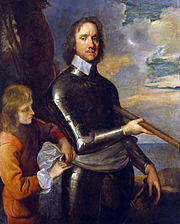GUEST POST BY AUTHOR ABIGAIL DANE, PART THREE
From Victoria: Abigail Dane presents her third essay, based on research for her trilogy The Whitleigh Series. The Pirate and the Virgin, Book One, is now available. Book two, The Baron and the Lady, will be published soon. Many thanks, Abigail!
Battle of Worcester and its Aftermath
Part 3 of 3
For six weeks, Charles II—“England’s Most Wanted,” if you will—survived many harrowing narrow escapes and near misses before his ultimate safe arrival in France. If those perilous weeks provided the catalyst for the fugitive king’s future frivolity, as some posit, they also exposed him to the ordinary lives of ordinary people in a way most kings would never experience. His turns as servant, tenant farmer, kitchen helper, debt collector and more may help to explain why Charles II was later referred to as “a king without airs and graces.”
After Oliver Cromwell’s death on 3 September 1658—seven years to the day after the Battle of Worcester—his incompetent son, Richard, became Lord Protector in his stead. Richard’s succession—or usurpation, as it was widely considered—lasted only nine months before he was forced to abdicate in 1659. He was allowed to “fade away” into obscurity but was thereafter referred to, ignominiously, as “Tumbledown Dick.”
Oliver Cromwell
By 1660, the vacuum left by the departure of the infamous Cromwells would be filled by none other than the fugitive king himself. Arriving in London on his 30thbirthday and having survived to gain the ultimate victory, Charles reclaimed his father’s throne and reestablished the British monarchy during a period that came to be called “The Restoration,” which restored not only the king and monarchy, but England’s pursuit of pleasure and gaiety, as well. If Cromwell is best remembered for his severe, joyless Puritanism, Charles II—affectionately called “the Merry Monarch”—is best remembered for his many mistresses and his many illegitimate children by them.
Charles II
With the reign of Charles II, the pendulum would swing its full arc from piety to hedonism—as if the last nine years, with their terrible cost, turmoil, misery and death, had never happened. By the time of Charles’ death in 1685, he had many children but no legitimate heirs, so he was succeeded by his brother James, who reigned as James II. One can only wonder what Cromwell would have thought of his legacy if he had returned to see what had become of his great cause in such a brief time.
POSTSCRIPT: Though the English Civil War ended in Worcester in September 1651, one might say the curtain did not descend on the last act of the play until June 2008. That’s when another Charles, also the Prince of Wales, paid off the debt incurred by his ancestor and namesake 357 years earlier. It seems Charles II had contracted for the Worcester Clothiers Company to provide uniforms to outfit his army, but in his haste, skipped town without paying the £453.3s he owed. With interest, that debt in 2008 would have been £47,500.
Source: “Historical Notes: Battle
of Worcester and its Aftermath,” in The Baron and the Lady, book two in the “Whitleigh series” by Abigail Dane. http://TransitionsUnlimited.biz, AbigailDaneRomance@gmail.org.
of Worcester and its Aftermath,” in The Baron and the Lady, book two in the “Whitleigh series” by Abigail Dane. http://TransitionsUnlimited.biz, AbigailDaneRomance@gmail.org.
Abigail Dane
Resources: Atkinson, Charles Francis (1911) “Great Rebellion#The Third Scottish Invasion of England” in Chisholm, Hugh Encyclopædia Britannica12 (11th ed.) Cambridge University Press pp. 420–421. Also, some background info and images are from the Military Wiki (http://military.wikia.com/wiki/Battle_of_Worcester)



